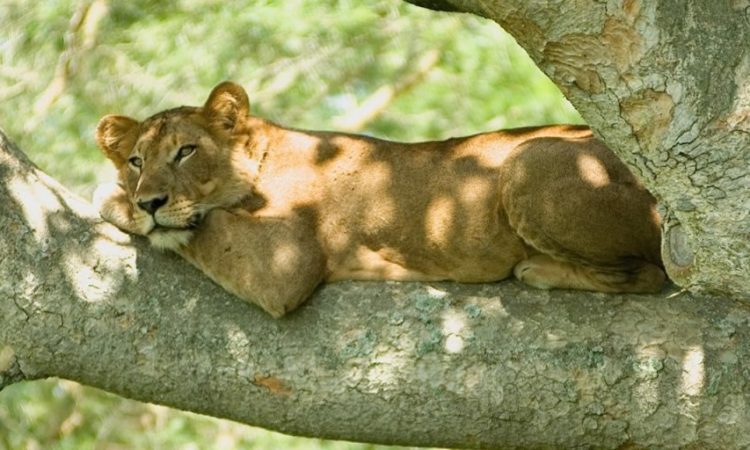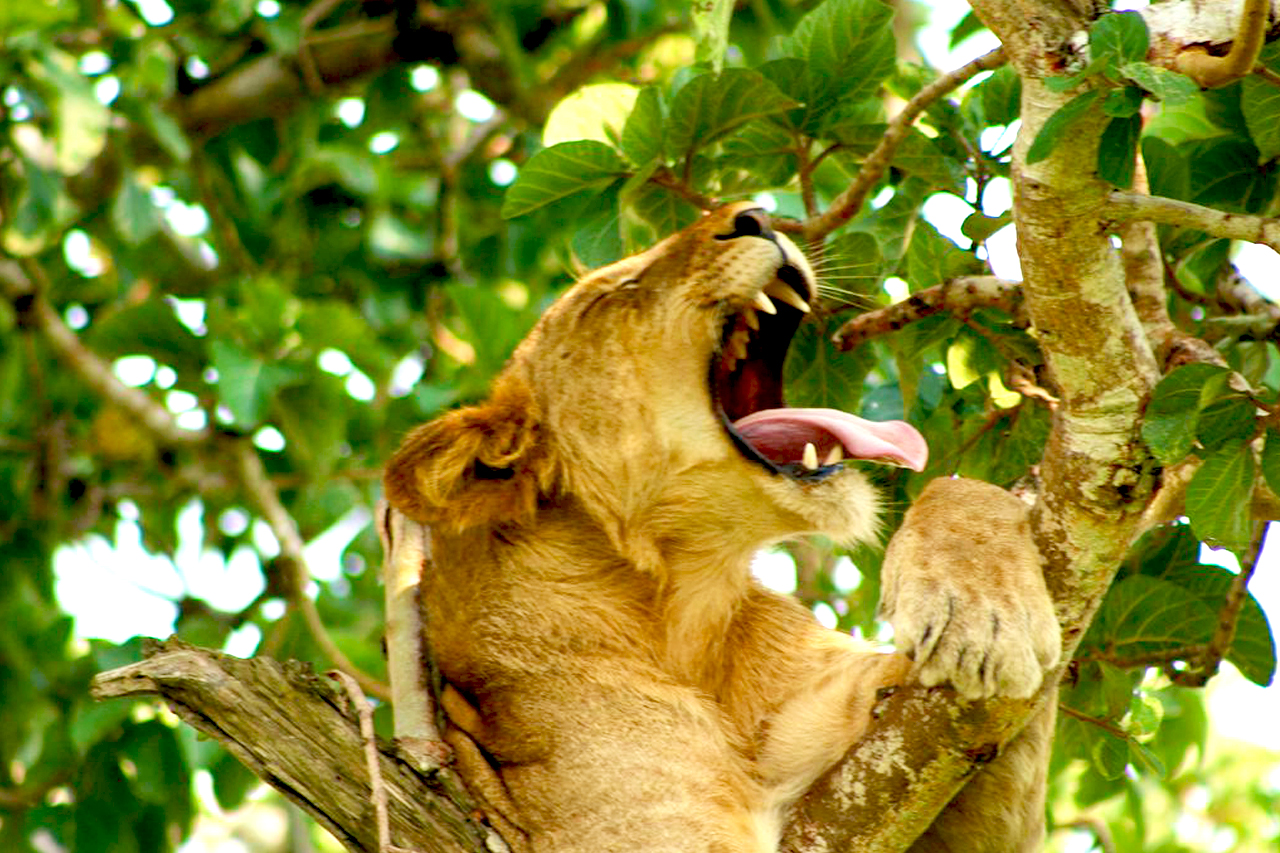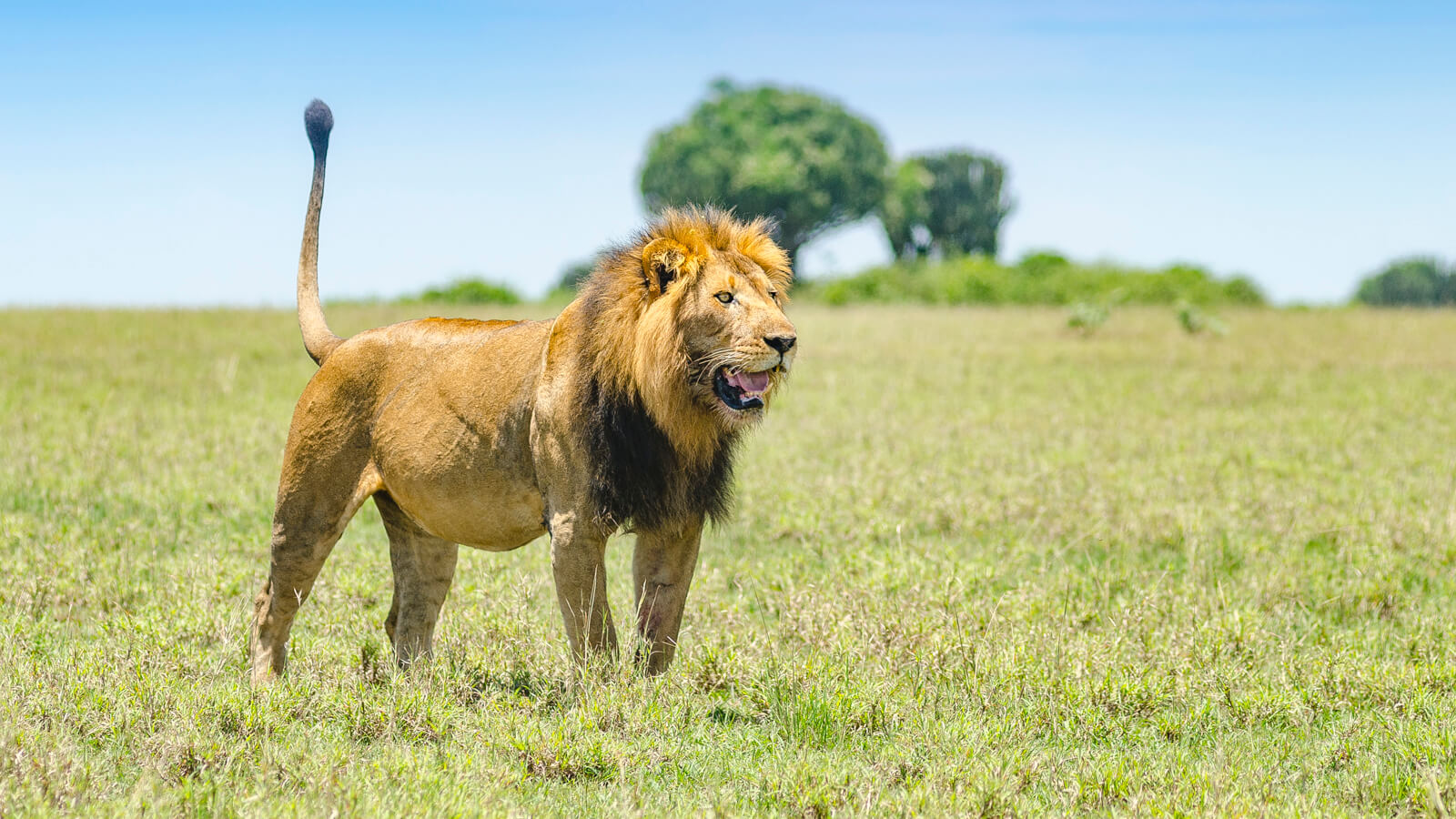
All About Tracking Lions in Uganda’s Queen Elizabeth National Park
All About Tracking Lions in Uganda’s Queen Elizabeth National Park: Lion tracking research in Uganda’s Queen Elizabeth National Park is a one-of-a-kind activity that allows you to actively learn about lions in this magnificent national park and should not be missed on any Uganda safari. Lion tracking is primarily a research activity run by the Uganda Carnivore Program (UCP), an organization dedicated to the study and protection of lions, leopards, and hyenas in Uganda.
Visitors will actually monitor some of the lions using locator devices under the supervision of Senior Research Assistant James, who has been involved in numerous wildlife interventions such as rescuing and relocating lions and leopards, as well as removing snares from elephants, buffaloes, and warthogs. You will study lion habituation calls, weather monitoring, and learning about the surroundings and behaviors of these lions.

This lion tracking study excursion provides guests with a 95 percent chance of seeing the king of the rainforests, the lions. The outcomes of this monitoring and tracking experience will be contributed to the data bank, assisting in animal conservation and comprehension.
How many people are allowed on the Lion Tracking Experience in Uganda’s Queen Elizabeth National Park.
Only a limited number of individuals are permitted to participate in this activity in order to prevent stressing the animals and to provide tourists with a high-quality experience. Lion tracking lasts around 2-3 hours, takes place early in the morning or late in the evening, and must be arranged through the Visitor Information Centre at Mweya Peninsular at least 24 hours in advance.
How much is Lion Tracking Experience in Uganda’s Queen Elizabeth National Park.
The fee is 120 USD per person, payable to Uganda Wildlife Authority at their Visitor Centre in Mweya, Queen Elizabeth National Park, and 10 USD to the Uganda Carnivore programme for the communities. The pricing do not include park entry fees.
How is Lion Tracking Experience Conducted in Uganda’s Queen Elizabeth National Park.
In Queen Elizabeth National Park, lion tracking is following an individual or group of lions to learn more about their behaviour, food habits, and social/group dynamics. To participate in the Lion tracking Because to recent advancements in tracking technology, lion tracking at Queen Elizabeth National Park is now possible.
A radio collar is attached to a pride’s alpha lioness. Lions are not picked because they frequently leave the group to mark their territory. Lionesses remain with the main group, allowing researchers to see all of the other lions, including cubs and alpha males experience, reservations must be made in advance. International tourists pay $120 per person.
Researchers favour collaring a lioness that is not pregnant, is of sufficient age, and is in excellent condition. Once she has been identified, a sedative is administered to render the lioness asleep before the collar is placed around the lion’s neck. It takes around two days for the lioness to become acclimated to the collar. The researchers make sure that the collars are comfortable and loose so that the cat does not get trapped when going through dense foliage.
Every time the frequency is called, the battery-powered collars broadcast radio frequencies that are scanned by a GPS system to locate the exact location of the lions. When the lion comes close, the tracking gadget emits a loud beeping sound. Lions move quickly, especially when food is limited. Their range can be 40 square kilometres if there is adequate prey.
In locations when food is scarce, their domain might extend over 400 square kilometres. The radio collars allow researchers to follow the movement of the lion prides and determine if they are unwell or under threat from locals living around the park.
The Researchers will exchange information on the lions’ biology, habitats, and hazards while tracking them. A lion’s lifetime is roughly 12 years, and females undertake the majority of the work. The male’s responsibility is to guard the family and keep outsiders out of their area. On average, a lioness has three cubs.

At many respects, lion tracking in Queen Elizabeth National Park differs from traditional game drives. Vehicles stay on specified tracks/roads during standard game drives. Depending on the position of the lions, the driver may deviate from the main route and travel far into the savanna.
When the squad gets near to the lions, the driver turns off the motor to prevent scaring the cats away. If you’re lucky, you could see the researcher taking DNA, blood, urine, saliva, ticks, and other samples from the lions after they’ve been tranquillized.
If you come across the entire pride, you will have a once-in-a-lifetime opportunity to watch a lion family up close. Keep an eye on the youngsters as they play in the middle of the adults who are sleeping. Lions employ several vocalisations to express their discomfort or to alert others to their whereabouts. Lions are a territorial species. The dominant male marks his territory by digging holes with his hind legs, rubbing his mane on bushes, or urinating near the territory’s major trees.
Other Activities Done in Uganda’s Queen Elizabeth National Park.
Queen Elizabeth national park in Uganda offers visitors a number activities including guided game drives, boat cruise excursions on Kazinga Channel, bird watching, guided nature walks, chimpanzee trekking and mongoose tracking among others.


